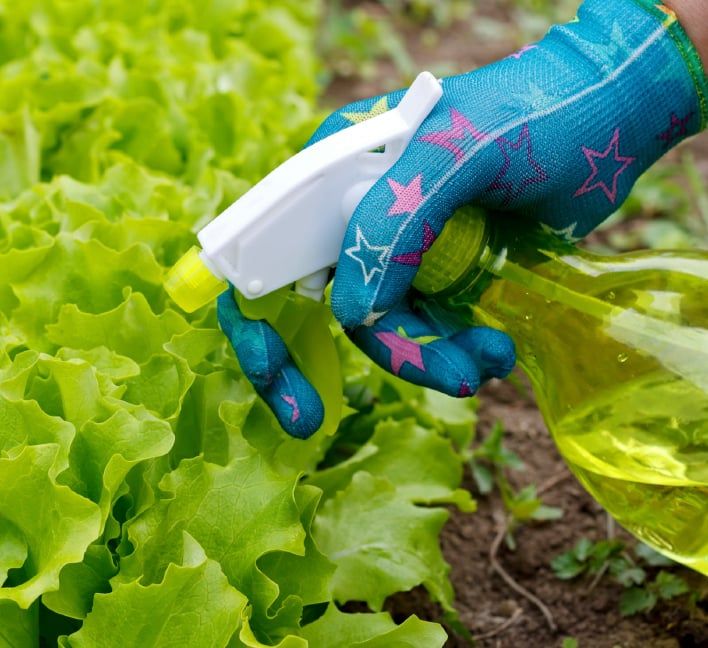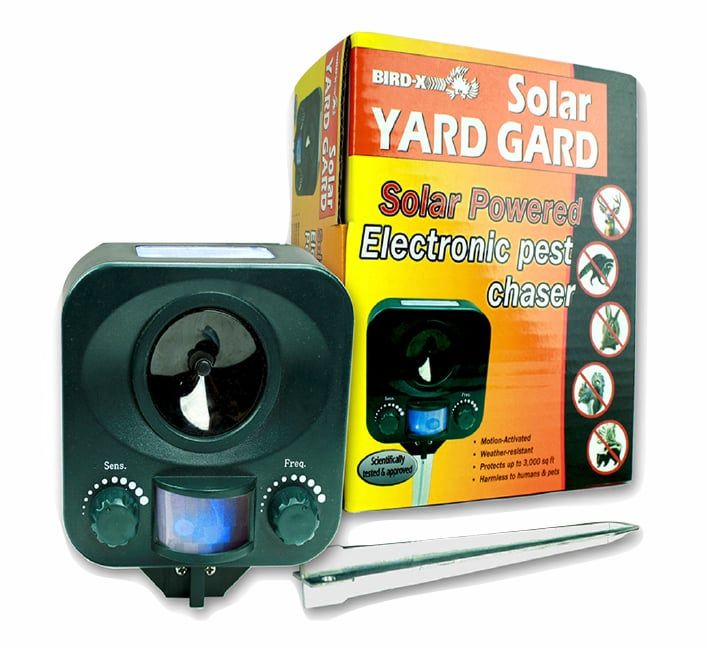5 Ways to Keep Critters from Eating Your Plants


Just when your vegetable garden and flower beds are at their best, that’s when wild animals start munching on them like a salad bar. Those spinach leaves ready to harvest? Gone! The cosmos, petunias, impatiens, and other flowers that you so carefully planted? Devoured. And there seems to be a bite taken out of every ripe tomato.
Keeping animal pests away is an ongoing problem on acreage properties—and we humans are outnumbered. Even the family dogs can wreak havoc on garden plants. But that doesn’t mean you should give up and let animals run amuck on your cultivated land.
Traps for small animals
Many kinds of wildlife can decimate garden plants. Mice, rats, and squirrels sneak into a garden for a tasty meal of tender plants or vegetables. Quite often they arrive under the cover of darkness.
There are two main trapping options for rodents. Old-school traps, including the traditional mouse trap, quickly kill the unwanted garden intruder. More recently, live traps have become widely available. These traps were created to capture the offending small animals unhurt. Then, they can be released back into the wild—hopefully, far away from your garden or flower bed.
Natural deterrents to keep critters away

Over the years, many different methods have been tried to deter animals from eating crops and ornamental plants. Deer rely heavily on their sense of smell, so many natural deer deterrents have an odor that deer do not like—or trick them into thinking a predator is nearby.
One time-honored approach to keep deer away is to let your dog (or dogs) spend lots of time in the yard. A dog in the yard will inevitably bark whenever it sees a deer, and that barking is a great deer repellent all by itself. In addition, deer do not like the smell of canines—or their urine and feces. Deer also don’t like the smell of dog hair, which also acts as a natural deterrent. So, when you brush your dog, don’t throw the hair away. Instead, scatter clumps of dog hair in the garden to discourage deer and rabbits from eating your plants.
Here are some other “folk remedies” that have been used to keep wild animals from eating plants and crops:
• Hot pepper spray
• Human hair
• Human urine
• Vinegar
• Soap flakes or soapy water
• Fake snakes
• Blood meal
There are many other commonly used deterrents, which a quick search on the Internet will reveal.
Predator scent to repel deer
Predator urine is the active ingredient in some commercially available animal deterrents, such as Summit Deer Ban repellent capsules. Each Deer Ban capsule contains coyote urine that triggers a deer’s instinctive flight response.
Deer Ban uses a unique gel-tablet application to provide effective, year-round protection from wildlife damage. Set out the capsules on the ground every 5 to 10 feet around the plants you want to protect. When you water the garden, the capsules to release the active ingredient for up to 90 days of protection. By the way, deer can smell predator urine but people cannot.
Unlike many deer repellents that wash away, biodegradable Deer Ban will continue to be reactivated by rain or watering for up to three months.
Summit Deer Ban is available at hardware stores, garden centers, and online at SummitResponsibleSolutions.com.
Fencing to keep deer and rabbits out
The longest-lasting and most permanent solution to a deer or rabbit problem is fencing. A sturdy, well-designed fence creates a physical barrier that can protect gardens, fruit trees, and flower beds for years.
A three-foot-tall chicken wire fence will keep most rabbits out of a garden—especially if the chicken wire (or other fencing material) is also buried at least six inches into the ground.
Rabbits are notorious diggers, so merely installing a fence that ends at ground level won’t provide a lasting solution.
For deer, the key is to install a fence that’s tall enough to discourage them from jumping over. The most effective deer fences are around 8 feet tall. Deer fences can be constructed of almost any material, but mesh fences are among the most popular.
A sturdy mesh fence, like those made by Tenax, features thick rounded tensile strands that resist stretching and sagging. Tenax standard deer fencing has a breaking load of 650 pounds and a life expectancy of 10 to 15 years. Extra-strength options are also available.
A sturdy mesh fence is also less obtrusive than solid fences, so it does a better job of blending into the landscape. Polypropylene mesh fencing in 100-foot-long rolls is available at hardware stores, Tractor Supply and deerbusters.com.
Solar-powered,motion-activated pest control

The Solar Yard Gard is a solar-powered ultrasonic pest control device that uses sound waves to keep deer, squirrels, raccoons, rodents, skunks and other animals away from garden plants. Humans can’t hear the high-frequency sound emitted by the Solar Yard Gard, but animals hear it clearly and keep away.
Just set up the device in a sunny area and the ultrasonic waves will be activated when the motion detector senses an animal and scare them away. One device can protect up to 3000 square feet of landscape. For larger areas, just use additional units. The Solar Yard Gard sells for $49 at hardware stores and bird-x.com/bird-products/electronic/solar/solar-yard-gard/.
Tags:Garden & Landscape

Acreage Life is part of the Catalyst Communications Network publication family.
















